If you think about making sake, where does the process really start? If you want to go to the very beginning, you need to look at growing sake rice. I recently had an opportunity to visit a Niigata rice farm and try my own hand at planting sake rice. I was invited to an event known as Taue (田植え) aka “rice planting”. This is mostly done by mechanized tractor these days, but I was going to try planting rice by hand the old fashioned way at a local Niigata Taue community event. Kids, parents, office workers, veteran farmers and one displaced New Yorker would plant the whole field. If I was going to fall on my behind in the mud, there would be lots of people to see.
Baby Steps
Sake rice does not start as a seed in the rice paddy. Rice is first grown from seed to seedling in trays filled with growth medium inside of a hothouse. This allow farmers to water and feed the seedlings and protects the tiny rice plants until they are big enough to be planted in the paddy.
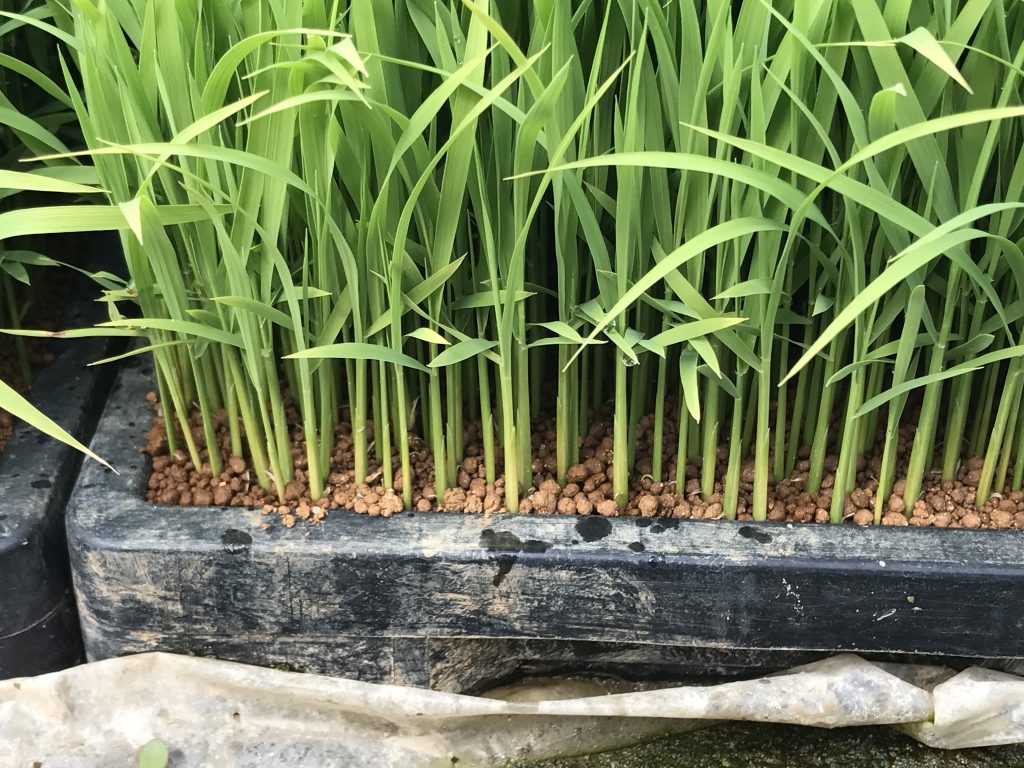
Rice seedlings ready for planting!
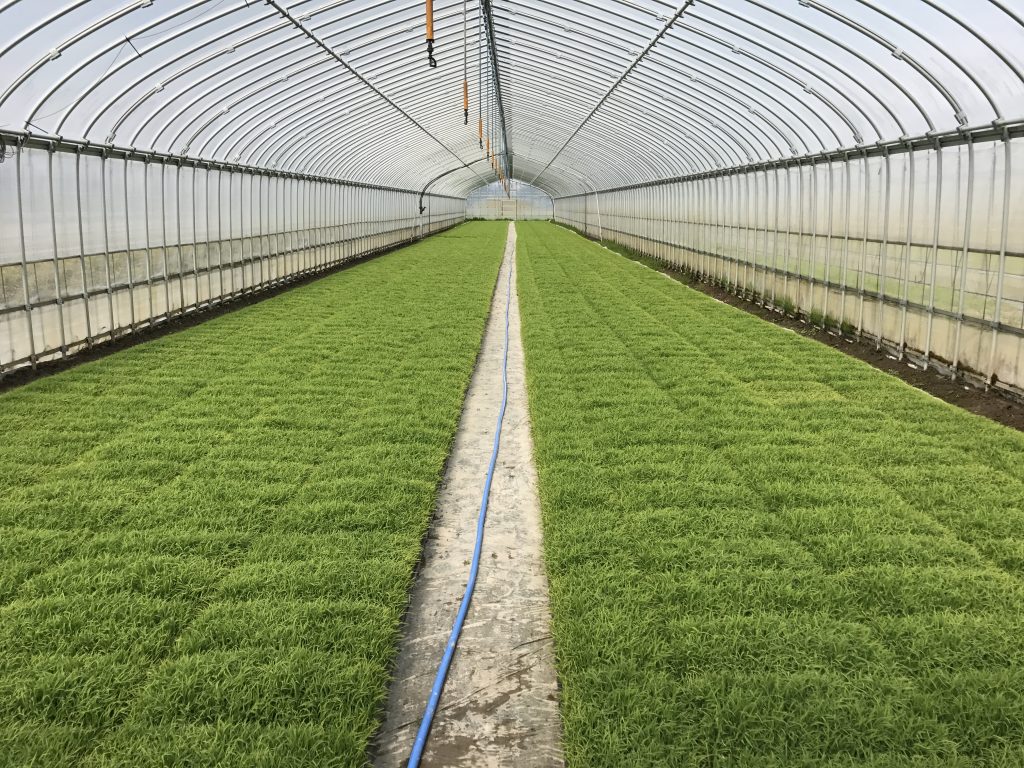
Inside the rice seedling Hothouse. row upon row of rice plants growing in trays. These seedlings will be planted in the next day or two.
The Gear
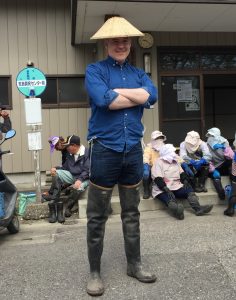
Hip waders and rice paddy hat complete the look.
Now that we had the seedlings ready to go, it was time to get suited up. I forgot to bring my rice planting rubber boots from New York, so I borrowed a pair. The boots closest to my size were thigh-high hip waders that tied onto my belt with some string. I was also issued a pointed rice paddy hat, towel for my neck and a plastic bucket to wear like a satchel to hold my rice seedlings.
The local professionals who came to help came dressed and were completely covered from head to toe. I thought this was a little extreme but then I learned the hard way that the water in the paddy acts like a mirror and will reflect the sun to give you a light sunburn from two directions!
Before we started planting, the paddy needed to be prepared. To give us a guideline for planting, the farmers roll a wooden template across the mud to create a grid pattern. this is rolled back and forth down the entire length of the paddy. This grid allows us to plant our seedlings in the corner of each grid square and keep everything aligned and spaced perfectly. Ingenious!
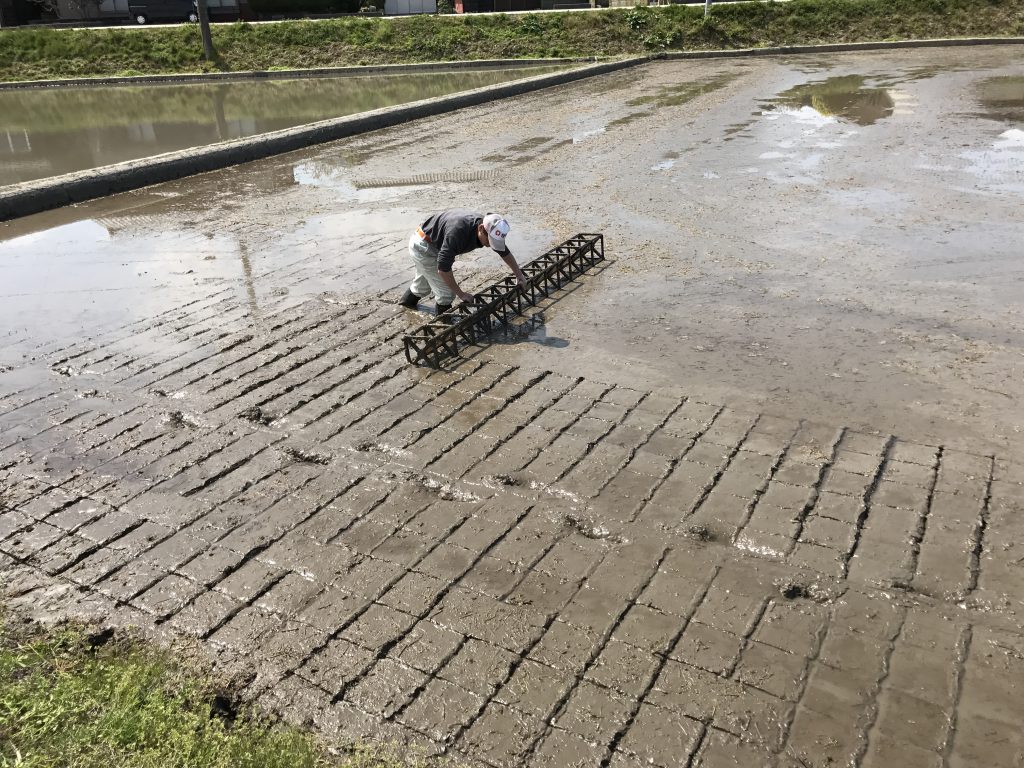
Rolling the wooden template across the paddy to create a grid that will guide us in planting the rice seedlings.
Let’s Get Planting
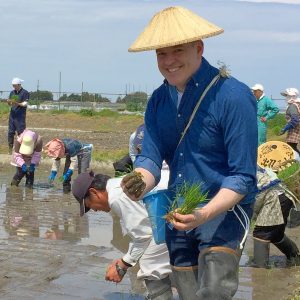
Into the mud! Ready to plant.
Soon the mud was up by my knees and it was hard to walk or move forward. Trying to pull one leg out of the mud to step forward threw me off balance and made me wobble, but luckily, I didn’t fall in front of 50 people. I planted all the rice I had in my basket, 3 stalks at a time until it was empty. Then I found myself stranded in the middle of the paddy with a long walk back to the edge. Walking slow and stilted like Frankenstein, I slowly made it back to safety! The first thing I did was squat down to rinse my hands in some running water. The mud on the back of my thigh high boots managed to get on my behind that way, so even though I didn’t fall, I still wound up looking like I did.
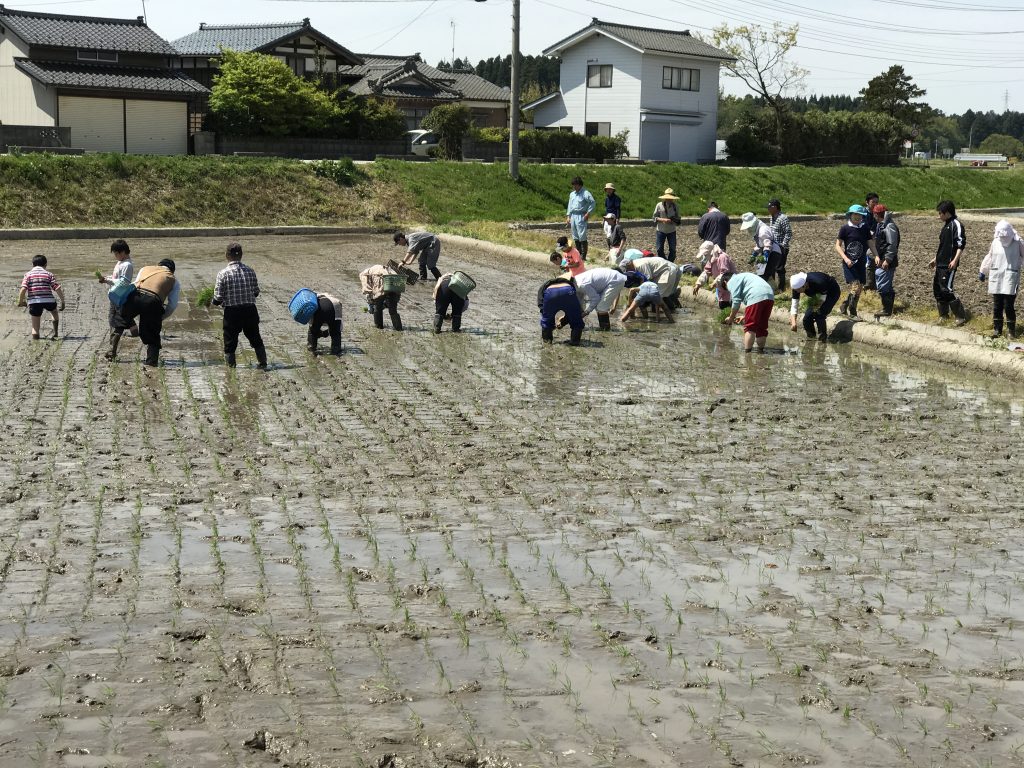
Everyone working together to plant the whole field!
With everyone helping, the field was planted in about an hour. I thought it would take three times as long. After the planting was done, the rice field is flooded with water. This keeps the seedlings protected and inhibits the growth of weeds. Looking out at the finished paddy, I couldn’t help feel a sense of accomplishment, even though I only planted a small part. The lines of rice were not as laser straight as a machine could do it, but I think doing things by hand can be its own reward. The next step in my farming career? I’m heading back into the mud this September to harvest!

The finished rice paddy after planting!!







